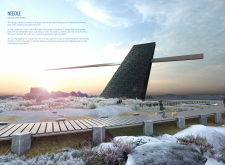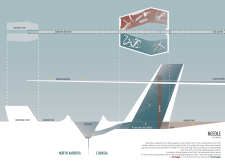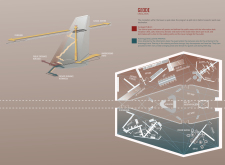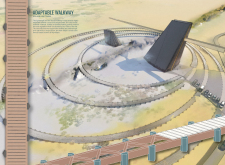5 key facts about this project
The Iceland Cave Tower is an architectural structure designed to connect with its natural environment in Iceland. Located amidst dramatic landscapes, it serves not only as an observation point but also as a bridge between human-made spaces and the surrounding geology. The design concept emphasizes the relationship between architecture and nature, inviting visitors to engage with the landscape from a fresh perspective.
Concept and Form
The tower's design involves a central axis that guides visitors into the building through a narrow entryway. This opening acts as a gateway, linking the interior with the stunning landscape outside. The observation deck, shaped like a slender wood splinter extending over a deep crevasse, offers expansive views. This feature creates a clear contrast between the rugged rock formations nearby and the delicate structure of the deck itself.
Public and Private Areas
The design divides the space into public and private zones. The public area, named Karlagjá, aims to welcome visitors and includes essential services like an information desk, reception area, cafe, restrooms, and elevators. This layout encourages exploration, allowing visitors to access trails that lead to the nearby Karlagjá cave.
In contrast, the Kvennagjá zone caters to a more private experience. It includes a lounge area for relaxation, along with changing rooms and showers for guest convenience. This separation of spaces provides tailored environments, allowing visitors to choose the level of intimacy they desire while enjoying the facility.
Circulation and Integration
Thoughtful circulation pathways facilitate easy movement throughout the tower. Clear routes guide visitors through both public and private areas, allowing for comfortable navigation. Additionally, the elevated walkway minimizes impact on local vegetation and ensures that views of the natural setting remain unobstructed.
Wood features prominently in the design, serving practical and aesthetic purposes. While the tower presents a solid appearance outside, the interior reveals an inviting space inspired by the unique geological formations of Iceland. Visitors can appreciate the interplay of architecture and nature, fostering a deeper connection to the landscape.






















































